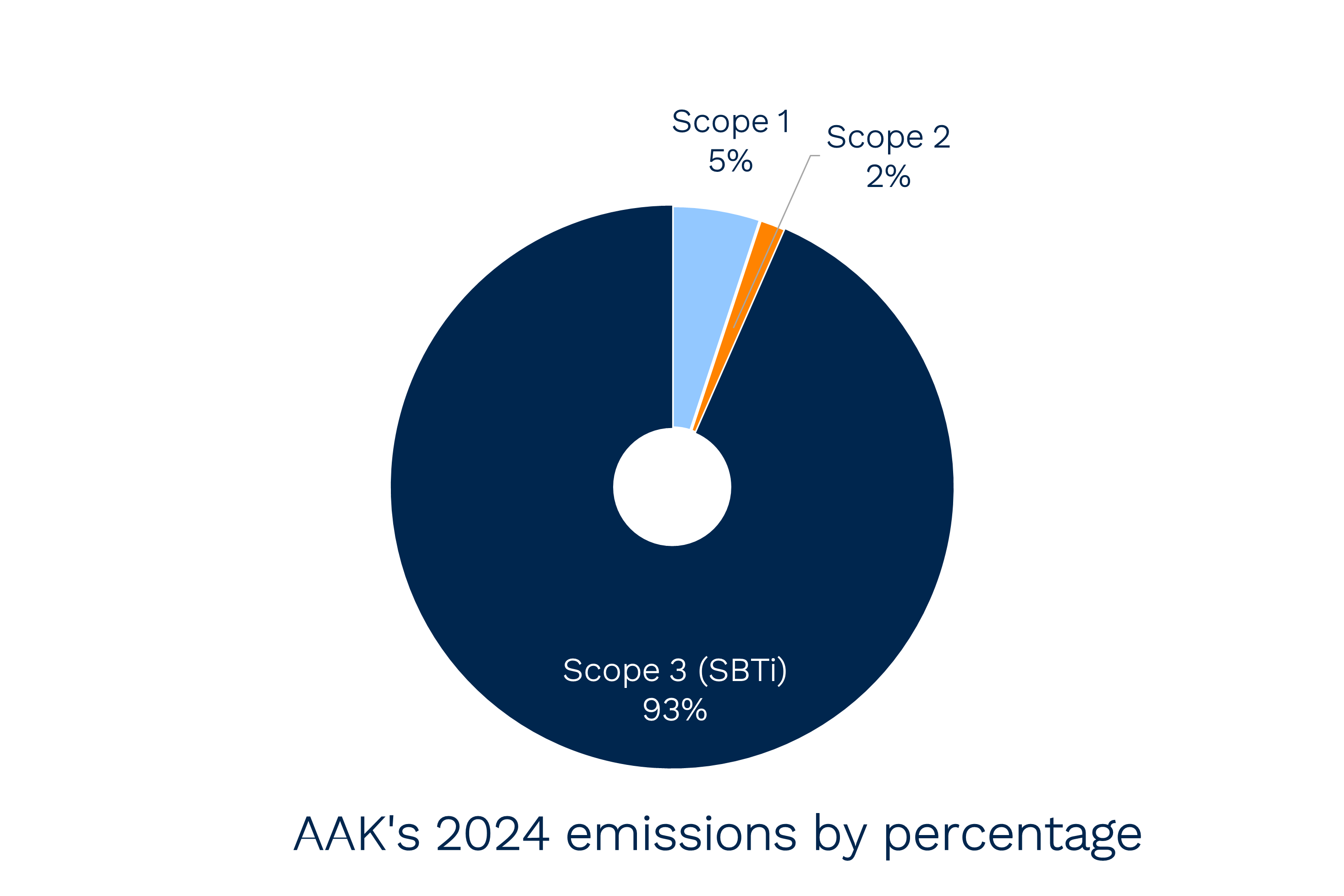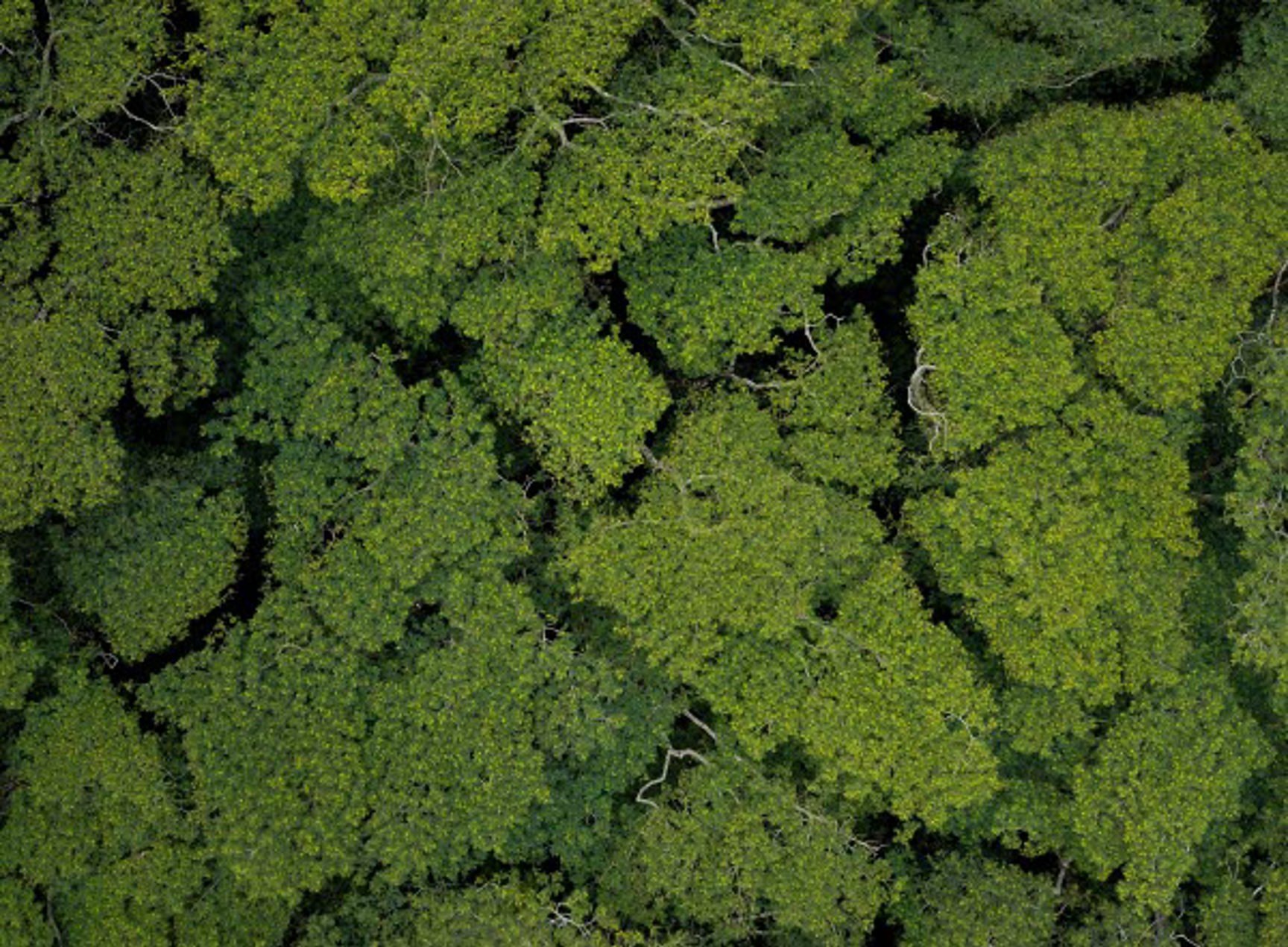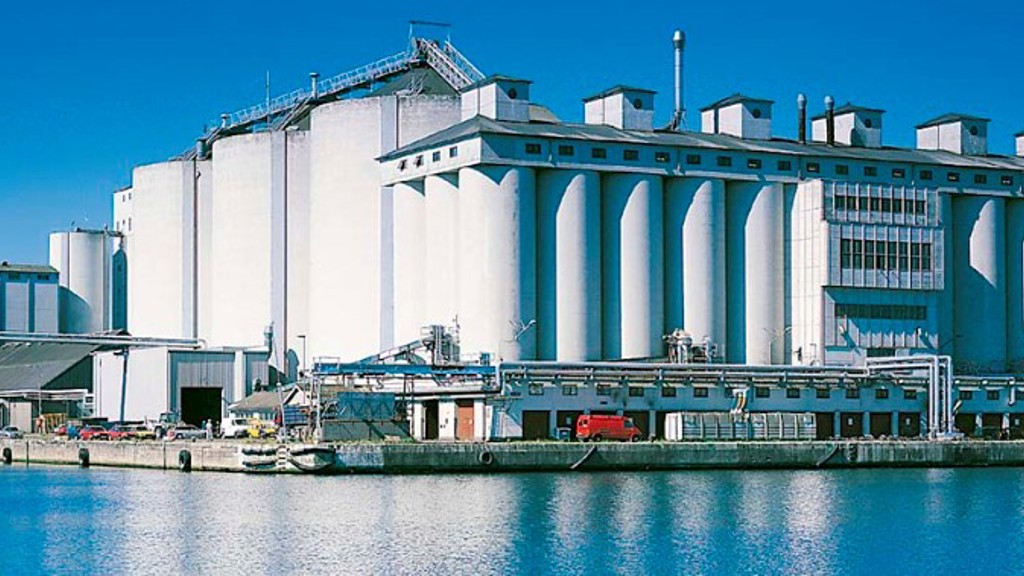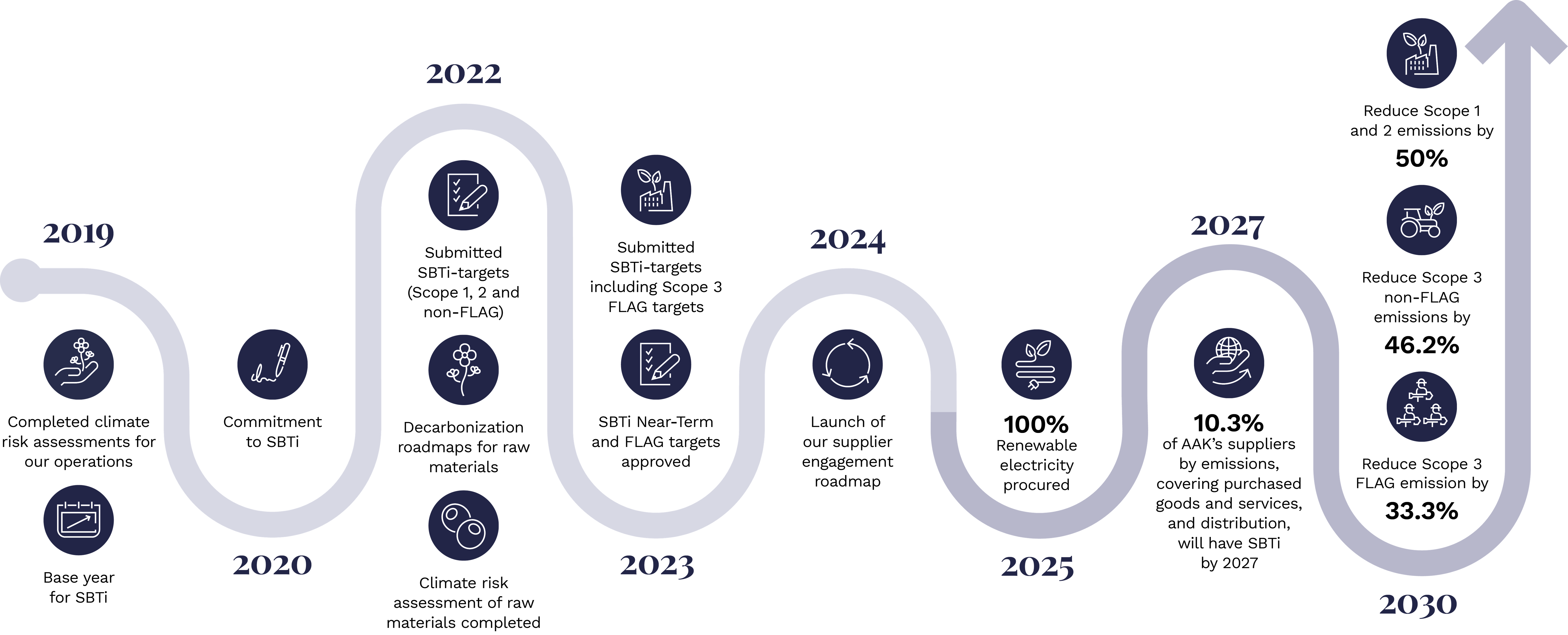Our promise of Making Better Happen™ includes taking care of the planet. A fundamental part of that is mitigating climate change.
At AAK, our climate impact is twofold: we are working to reduce the environmental impact of our own operations, and we're dedicated to helping our customers achieve their sustainability goals by co-developing plant-based solutions.
In 2023, our climate targets were approved by the Science-Based Targets initiative (SBTi), meaning both that our targets are in line with Paris Agreement climate goals – and that we have a feasible path toward reaching them.
Here’s where we are on our climate journey, the goals we are aiming for, and our action plan for getting there.
Understanding AAK's Climate Footprint

To reduce our impact we first need to understand it, which requires comprehensively tracking and reporting on our greenhouse gas emissions.
We calculate our emissions following a methodology based on the Greenhouse Gas Protocol (GHG Protocol). We report our emissions annually in our sustainability report, grouping them into the three scopes defined by the GHG Protocol.
In 2024, AAK's emissions were:
Scope 1 - 227,285 tons CO2e.
These are the direct emissions from our own facilities, like the fuel we use in our production plants.
Scope 2 (market-based) - 67,366 tons CO2e.
These are indirect emissions from utility purchases, mainly from the electricity, steam, heating, and cooling we buy to power our sites.
Scope 3 (within SBTi absolute reduction target boundary) - 4,176,697 tons CO2e.
These are all the other indirect emissions across our value chain, which occur either before our raw materials reach us (like during farming) or after our products leave us. This is the largest category for AAK and includes:
- Scope 3 FLAG (in target boundary): 2,477,188 tons CO2e.
"FLAG" stands for Forest, Land, and Agriculture. These emissions are linked to how land is used and managed in farming – things like changes in forest land or fertilizer use. - Scope 3 Non-FLAG (in target boundary): 1,699,779 tons CO2e.
These are other Scope 3 emissions, often related to industrial processes, like those used to process raw materials at our suppliers' mills or in transportation.
AAK's Climate Targets Are Science-Based
Our emissions reduction targets are science-based, developed in line with what is necessary to meet the goals of the Paris Agreement.
In 2023, our targets were formally approved by the Science Based Targets initiative (SBTi), a global organization that validates corporate climate goals.
AAK's SBTi-approved commitments:
|
Target Area |
SBTi Commitment |
|
Scope 1 & 2 Emissions |
Reduce absolute emissions by 50% by 2030 (from 2019) |
|
Scope 3 Non-FLAG Emissions |
Reduce absolute emissions by 46.2% by 2030 (from 2019) |
|
Scope 3 FLAG Emissions |
Reduce absolute emissions by 33.3% by 2030 (from 2019) |
|
Supplier Engagement |
10.3% of suppliers (by emissions) to have SBTs by 2027 |
|
Deforestation |
No deforestation across primary commodities by 2025 |
We are making progress toward our SBTi targets. Vitally, we are on track to meet our Scope 3 FLAG target, having already achieved a 28.4% reduction by the end of 2024. We’ve also accomplished a 17.9% reduction in our Scope 1 and 2 emissions.
However, progress on our Scope 3 non-FLAG emissions (currently at a 7.4% reduction) needs to accelerate to meet our 2030 ambition. This is a key focus area for us.
AAK's Climate Strategy
Our climate strategy is built on four pillars:
- Better solutions, helping our customers replace animal-based and fossil ingredients in their products with plant-based options that have a lower carbon footprint.
- Reducing the carbon footprint of our own operations.
- Mitigating the climate impact of our supply chain.
- Investing in emerging technologies for climate-friendly ingredient-solutions
Here's how we're putting our climate strategy into practice:
We are reducing our operational emissions by rolling out energy efficiency projects, such as the one at our Zaandijk facility which reduced natural gas use by 5.6%.
In addition, we're working towards sourcing 100% renewable electricity by 2025.
One key initiative in our Scope 1 and 2 emissions reduction is our new bio-boilers in Aarhus:



